SUMMARY
This is AI generated summarization, which may have errors. For context, always refer to the full article.
![[Ilonggo Notes] ‘Lunok’ and ‘mari-it’ in Iloilo](https://www.rappler.com/tachyon/2021/08/tl-collage-sq.jpg)
Anyone passing by some of the major roads of Iloilo City’s downtown area will not fail to notice huge trees with massive roots and foliage that grow unhampered, even to the extent of encroaching on the street, engulfing electric posts and sidewalks. City authorities seem loath to touch them, or even trim their branches, and this is not solely for environmental reasons. These trees, known locally as lunok, are considered mystical – havens for spiritual beings.
I’d always thought that lunok was a description of a particular place, an abode of spirits and denizens of the netherworld, but it seems it is the collective name, in Ilonggo, for several types of tree that elsewhere in the country is known as the balete. The balete, in turn, includes several species of trees belonging to the genus ficus, and are also popularly known as “strangler figs,” a name most apt.

Their main characteristic, according to the Encyclopedia Britannica, is that they begin life as a seed left on a high tree branch via animal droppings of birds, monkeys, or bats; the young plant lives as a type of air plant on the tree’s surface. As it grows, the roots descend along the trunk of the host tree, eventually reaching the ground and entering the soil. Several roots usually do this, and they become grafted together, enclosing their host’s trunk in a strangling latticework, ultimately creating a nearly complete sheath around the trunk.
The host tree’s canopy becomes shaded by the thick fig foliage, its trunk constricted by the surrounding root sheath, and its own root system forced to compete with that of the “strangler.” This process can kill the host. If it does not, the host tree, being much older, dies eventually and rots away, and a magnificent fig “tree” is left behind whose apparent “trunk” is actually a gigantic cylinder of roots. Acacia seem to be the preferred hosts, judging from several lunok seen around the city, though I’ve also seen some growing from narra, pine, mango, and star apple trees.
No one really knows how the trees came to be known as the abodes of otherworldly engkantos such as kapre and tamawo, but it seems easy to consider them as such. After all, its appearance – the huge network of roots, the lush and dense crown that can blot out both sun and rain – may well appear inviting to supernatural beings. That the tree also hosts various animals — birds, lizards, bats, various types of insects, even snakes and salamanders — adds to its mystique. Wind rushing through the foliage can even sound like the call of mysterious beings.
Humans neither plant nor nurture it; it even grows without soil, can start from a crack in the wall or on a fence. It also seems extremely hardy and must be left alone.
In some places, sorcery rituals are held inside the trunk networks. One of the most famous ghosts of Philippine history, the white lady, is usually seen along the eponymously named Balete Drive in Quezon City even if the once huge tree is no longer there.
The mari-it
A related, though not identical, concept is that of the mari-it, which is best described as a place of danger, where accidents and tragedies seem to happen often owing to enchanted and invisible beings. So prevalent is this belief about places being mari-it that even on well-cemented roads and national highways, I have seen signs warning, “Beware: Mari-it.” (It’s probably good, too, that people are reminded to drive more carefully at these points in general.)
Ilonggo anthropologist Alicia Magos has done ethnographic research on mari-it concepts as a worldview, finding this belief as helpful for sustainable development, since parts of the forests end up untouched because of it. But clearly, places that are mari-it do not have to have lunok trees — they can be densely forested, but they can also be clearings or even anthills and roadsides. People do think that some lunok can be mari-it, but mari-it places do not need to have lunok trees.
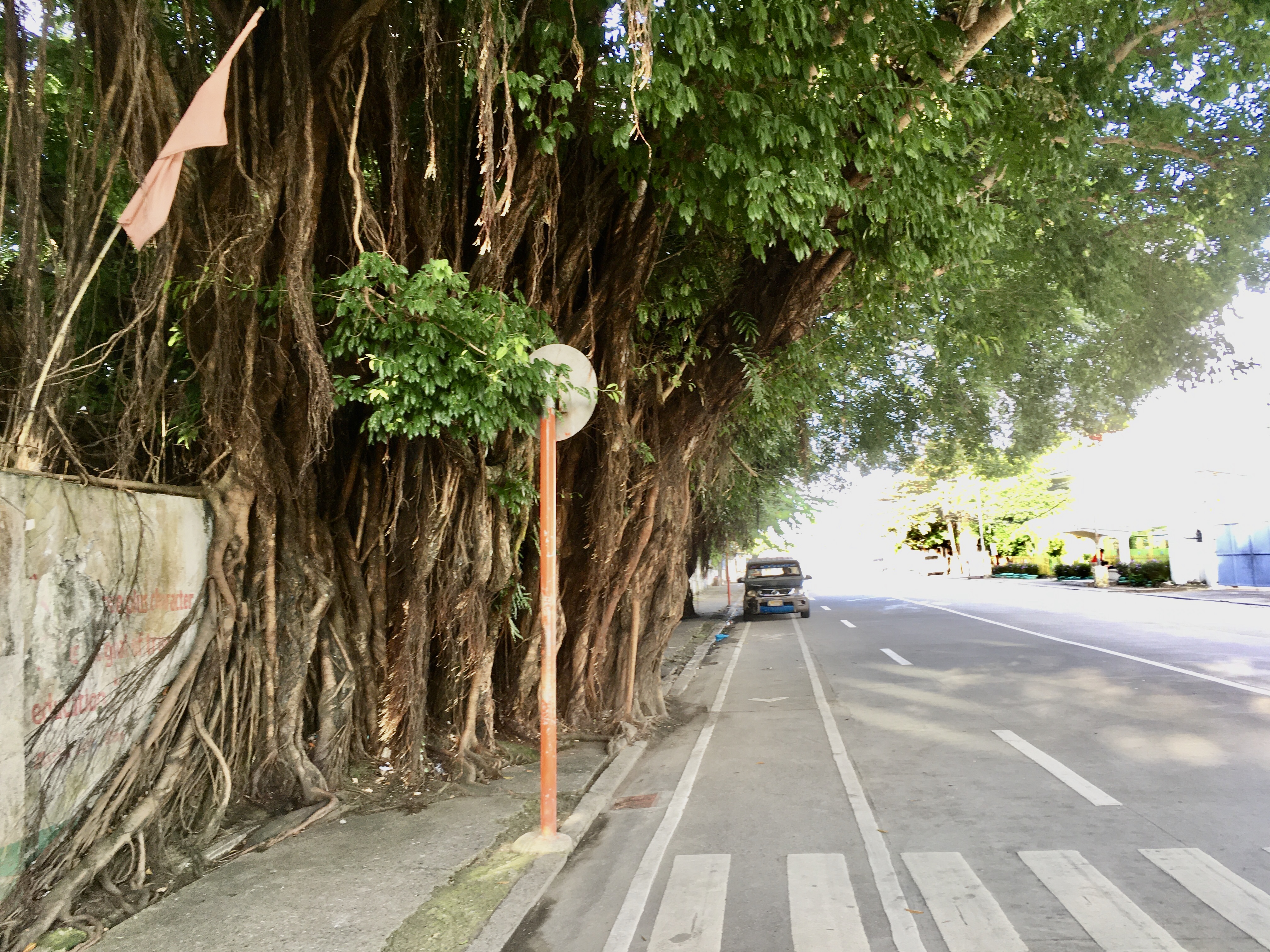
Legendary lunok
But back to the lunok of Iloilo. Probably the most prominent one is the one along JM Basa Street, right across the Philippine Museum of Economic History (formerly, the Elizalde Building, and before that, the office of the first Philippine multinational, Ynchausti and Co., dating back to the late 19th-early 20th century). The sidewalk has been completely obliterated by its growing trunk and roots. Legend has it that whenever someone would try to prune the branches or cut down parts of this tree, the power saws would malfunction, and workers would be stricken with illness or have an accident.
About 50 meters across the street, at the Iloilo fire station, is another clump of lunok, and yet another series of clumps is about the same distance away, to the back of the Iloilo City Hall and the former offices of the British firm Ker and Company. It is said that these clumps of trees are somehow interconnected underneath the ground.
Another lunok is on the corner of Ledesma and Valeria streets; this one is a variety of rubber tree, as seen by the size and shape of its leaves, its buds, and stems – it is clearly a different species than the others. Its roots would have reached the ground by now if they were not knotted together and tied into fist-sized “balls.” Nobody seems to have attempted to trim these roots.
Other huge lunok are found behind the long-demolished Cacho building along JM Basa Street, at the deserted PLDT building on Guanco Street, and at an abandoned warehouse beside an ice plant on Muelle Loney.
And on the way to becoming a full-blown lunok is the tree on JM Basa, very near Plaza Gay, that started as a sapling on the third floor level of a building that houses a bank, a Chinese school and a Jollibee branch. It was allowed to grow unhampered, and the roots have now reached ground level; in 10 more years it could be a formidable tree as well.
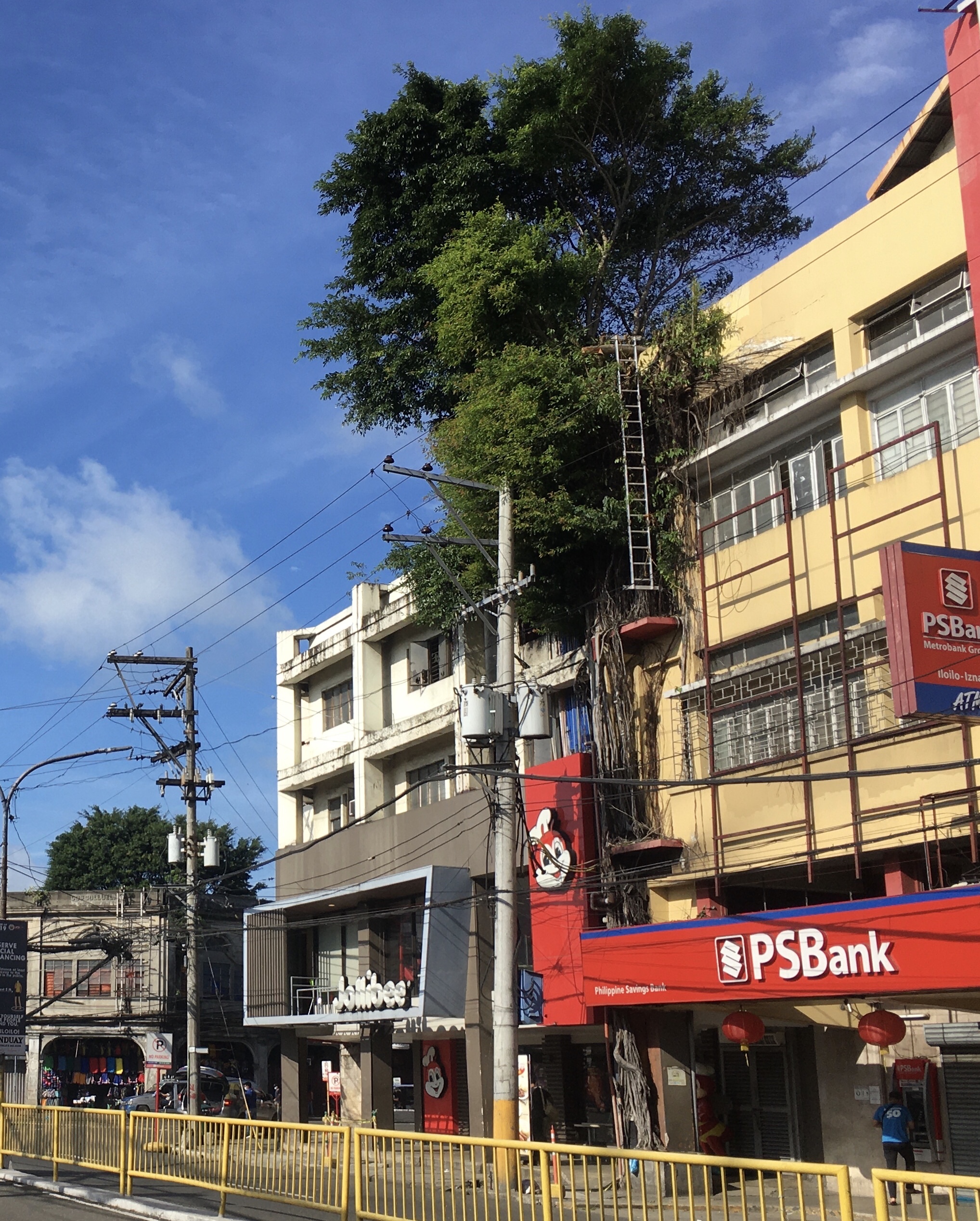
This observation beggars the question of when a tree becomes recognized as a lunok – does this have something to do with its age, size, or the reach of its roots and branches? Or, as Hoffarth suggests, is it when it appears to be impenetrable?
Another imposing one in Jaro district is at Casa Mariquit, the family home of the wife of former Vice President Fernando Lopez; this is reputed to be haunted. The city high school in Molo also has huge lunok right beside its front gate, their roots completely covering parts of a concrete fence and obliterating the sidewalk. As a child passing by that tree at night, I would consciously look away, fearful that I might spot a gigantic kapre smoking up there.
Different lunok are noted all over the islands. Reputedly, the oldest tree in the country is a lunok in Lumapao, Canloan City, Negros, which has been dated by botanists to be about 1,340 years old as of 2021, meaning that when Magellan came to the islands 500 years ago, it was already an ancient 800-year-old. In the evenings, this tree is lit up by a thousand fireflies, akin to a Christmas tree. The network of trunks is so vast that 42 people are needed to encircle the clump.
Another old one is a 400-year-old balete in Barangay Campalanas, Lazi, Siquijor, believed to be the oldest and the biggest in the province. Unusually, a spring emanates from the base of the tree and flows straight into a man-made pool, where one can go for a dip and be tickled by the bites of little fish.
Meanwhile, the so-called “Millennium Tree” in Barangay Quirino, Maria Aurora, Aurora province is claimed to be the largest of its kind in Asia. It is estimated to be about 600+ years old and 60 meters tall, with its roots about 10 to 15 meters in diameter. Adults can squeeze into the center of its root network.
But it’s not only here that the ficus species is revered. It is considered a national tree of both Thailand and India; the Buddha found enlightenment while meditating under a similar tree, known as the Bodhi tree, which is also of the ficus family. In Cambodia, people who visit the 12th century temples of Angkor cannot fail to be impressed by the huge roots and hundred-foot-tall trees that engulf the stone structures at the Ta Prohm temple. These trees are said to be “the most photographed in the world” and were further popularized in the movie Tomb Raider, which featured these behemoths. Some of these temples would have literally disintegrated were it not for the centuries-old root structures that hold the stones together yet also prizing some of them apart.
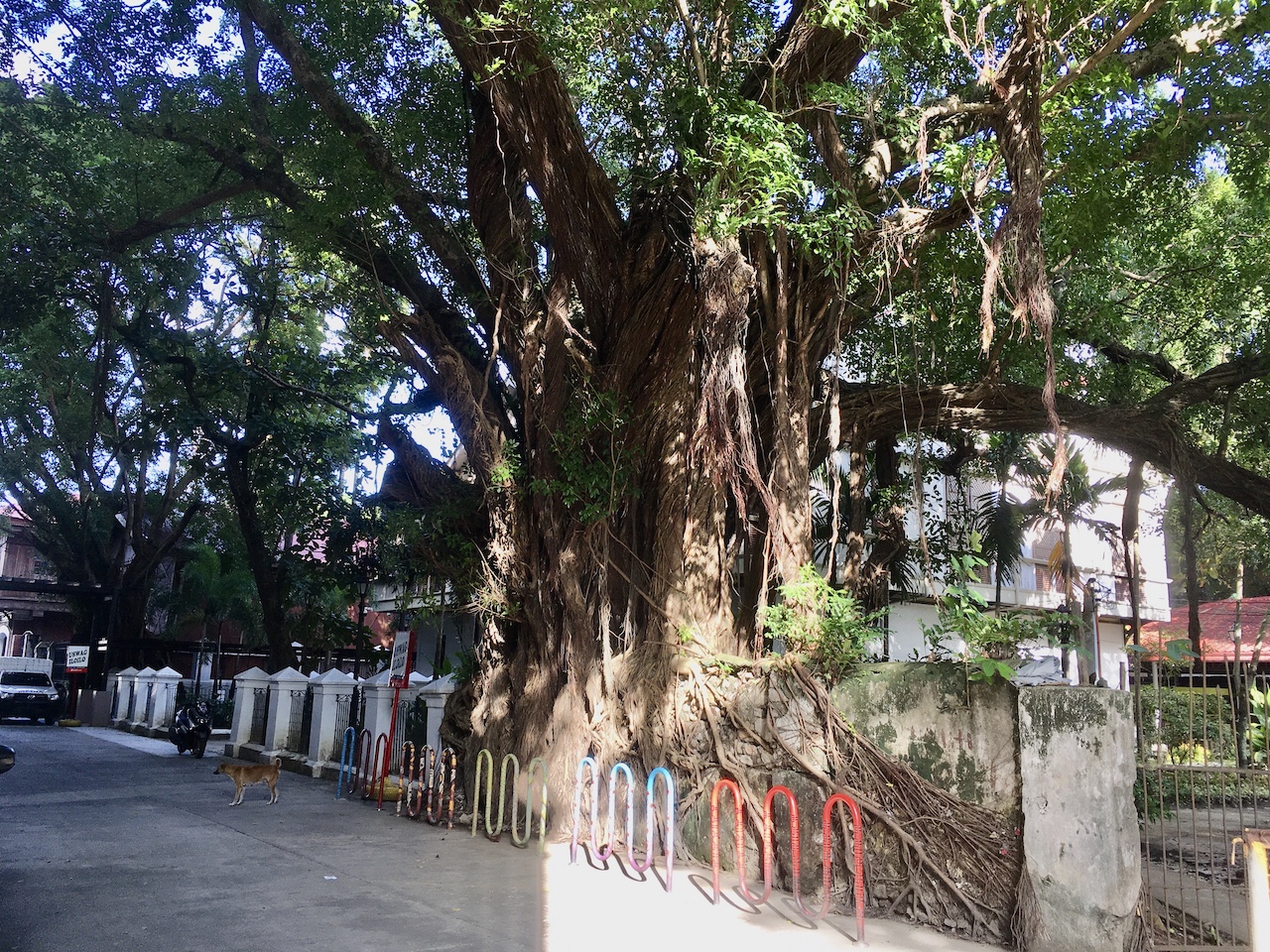
Lunok can also be grown as a bonsai. Some say, though, that it should not be placed indoors as it invites ghosts. And in order to minimize offense to any spirits living in the lunok, a local spirit medium may be requested to appease the spirits and make offerings and prayers prior to trimming any part of it.
Murga mentions that the clearing of the campus for UP Visayas in Miag-ao town back in the ’80s involved a special fee for a babaylan, after excavation equipment inexplicably failed to function. Following the intervention, the trees fell over with a simple push by the babaylan.
Even today, beliefs about the trees die hard – ensuring that generations from now, lunok will still be around in the midst of the city, to mystify and provide safe haven for creatures, real or imagined. – Rappler.com
Vic Salas is a physician and public health specialist by training, and now retired from international consulting work. He is back in Iloilo City, where he spent his first quarter century.
Add a comment
How does this make you feel?
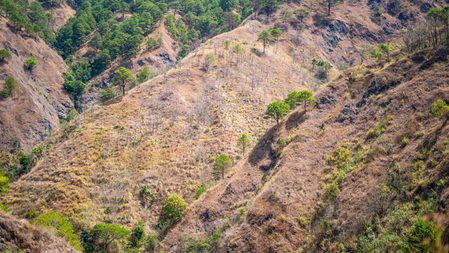
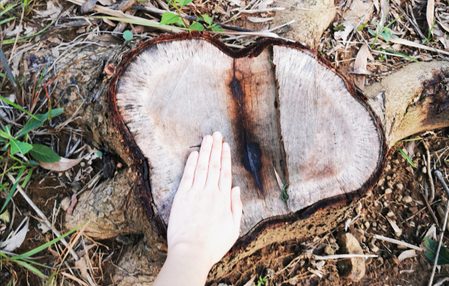








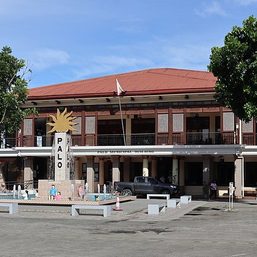

![[The Slingshot] No, no, no, National Museum! The Boljoon artifacts do not belong to you!](https://www.rappler.com/tachyon/2024/02/tl-boljoon-artifacts-nat-museum-02242024.jpg?resize=257%2C257&crop=270px%2C0px%2C720px%2C720px)
![[Ilonggo Notes] Putting the spotlight on Ilonggo and regional cinema](https://www.rappler.com/tachyon/2024/04/Screenshot-2024-04-07-at-2.04.59-PM.png?resize=257%2C257&crop=321px%2C0px%2C809px%2C809px)




There are no comments yet. Add your comment to start the conversation.